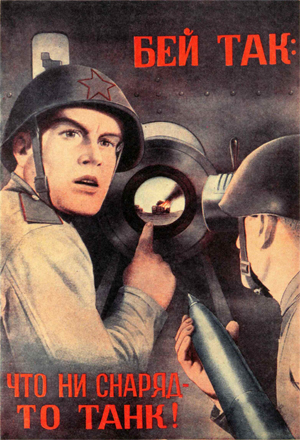Part 97: Turn 13 - Soviet Detraining Phase: The Final Blows

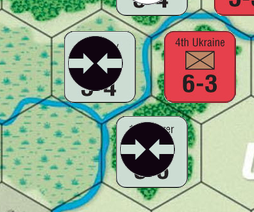
Operation Rumble in the Jungle - 4th Ukraine vs 9th Army, 1st Panzer
Combat odds: 6/8 = 1:2, no shifts
Roll: 2 - CA!
CA accepted at 1:1 odds.
Roll: 2 - no effect.
Seeing the impending Soviet advance against their bulwark in Minsk, the Germans begin a series of forays against the 4th Ukrainian Front. This way they succeed in forcing the Soviets in diverting a large part of the Front's forces away from the push further north. However, the Front command remains committed to the push against the 4th Army, and it's lack of a decisive response allows the Germans a chance for a real counter-push. The difficult terrain, however, prevents that from happening and the battle ends in a stand-off.
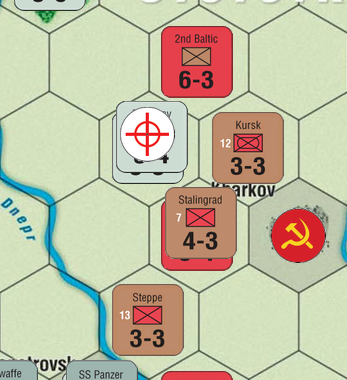
Operation Coker's Revenge - 2nd Baltic, 2nd Tank, Kursk Front, Stalingrad Front vs 6th Army, 16th Army
Combat odds: 18/6 = 3:1, shifted +1 for Armour Bonus for a total of 4:1
Roll: 4 - DR
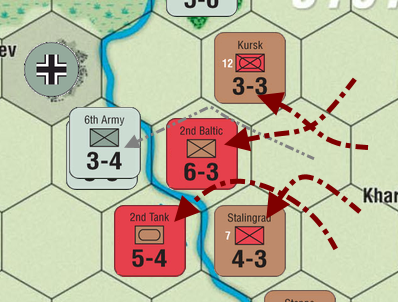
The German positions west of Kharkov come under assault as well and quickly crumble under the Soviet advance. The two armies manage to withdraw in good order, but that only opens up a way for Soviet exploitation. The lead elements of the 2nd Tank Army cross the Dneper right on the backs of the fleeing Germans.
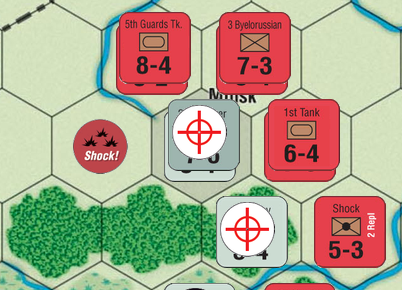
Operation Send Them To The Marshes! - 1st Baltic, Shock Front vs 4th Army
Combat odds: 12/3 = 4:1, shifted +1 for shock front, -1 for Forest for a total of 4:1
Roll: 4 - DR
Operation A.M.M.D. Advances - 1st Byelorussian, 1st Tank, 3rd Byelorussian, 4th Tank, 5th Guards Tank Army vs Minsk
Combat odds: 34/10 = 3:1, shifted +1 for shock front, +1 for Shock! marker, -1 for City hex for a total of 4:1
Roll: 6 - DS
Defenders have no legal retreat paths and are eliminated. They go to the Destroyed Units Box.
Soviets capture Minsk. Soviet VPs up by 1, now at 20.

The Soviets start a vicious attack against 4th Army as well, seeking to cut off the Germans in Minsk. The Axis forces try to hold them off in the rough terrain, but Soviet intelligence prevails again, providing them with spot-on targeting for their massive initial artillery barrages. The 4th manages to retreat, but that only means that Minsk is now encircled. Soon, a huge force descends on the Axis bastion, and smashes it as well. Polkovnik Gradenko rolls over the scattered Germans, who soon start trying to break out of the encirclement. A frantic race begins, with the Soviets shuffling to close the door on the Axis force. Whatever units break out are in no shape to fight - a very powerful blow to the German war effort. And as if that was not enough, the Soviets fan out and claim pretty much the rest of the Belarussian SSR from the broken Germans. For his effort, Gradenko is promoted to General-mayor.
Minsk was historically liberated on July 3, 1944. The city was heavily defended and most of it was destroyed in the fighting. After the war, most of old Minsk architecture was discarded in favour of creating a new city in the socialist realist vein, with only the Trayetskaye Pradmestye preserving the remnants of old Minsk. Today, the city is the capital of Belarus.


Fangz can place any number of units from the Rail Movement Box on the main map. These units have to either be placed in Soviet Cities which can trace an overland supply path or within three hexes away from such a City. If not placed in a City, they cannot be placed in EZOCs or adjacent to enemy-controlled Cities. The deadline for this is Sunday, July 17, 7 PM GMT.

The Soviets had a vested interest in developing a semi-automatic rifle for their troops before the war. In 1935, they held a design contest, won by Simonov's AVS-36, which quickly proved to be a very flawed rifle. The contest was held again, and this time won by Tokarev. The SVT-38 was supposed to become the standard Red Army service weapon, with production scheduled to reach 2 million units by 1942. However, those plans were - as usual in Soviet economy - overly ambitious, and the unusually (per Red Army standards) complex weapon did not replace the Mosin, as only 150 000 rifles were made by April 1940, when production was cancelled in favour of the improved SVT-40 - like the one you can see above. When the war with Germany broke out, the Soviets decided to switch back to the Mosins for the duration of the war. Once the war ended, they already had designs for improved infantry weapons - the SKS and the AK-47 - either being developed or nearing production. By 1955, the SVT was already out of service, with 1.6 million of them built.
